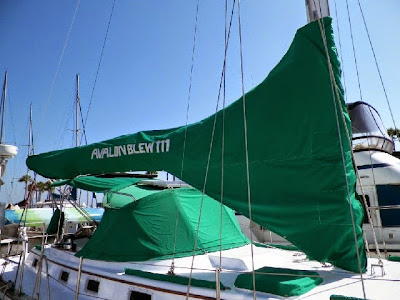A sail plan is basically a two dimensional representation or sketch of the sail that defines its area, rig type, size and shape in general terms. It also shows the mainsail and the other important parts of the sailboat.
The task of the sail plan is to provide the sailmaker with enough details so that he can estimate the power of the boat’s sails and also make sure that the center of these sails cooperates properly with the hull so that it results in a well-balanced sailing.
As the sail plan is mainly a two dimensional figure, it does not actually provide sufficient amount of details to create a good sail. In the majority of the cases, the sails are 3D figures with intricate works on them.
Sail design involves taking the two dimensional sail plan and creating a 3D rendition of it.
A sail plan is generally a combination of sail proposals made for different wind/weather conditions. It can be a normal or working sail plan, a storm sail plan and a light air sail plan.
If you are an experienced sailor, you can chalk-out on your own and provide it to a sailmaker so that he can build you following your sketches. If you are a new sailor, then it’s better not to try your hand in it.
Just make a detailed description of your sailing itinerary and consult with a good sail supplier and sailmaker. They will guide you in a proper way. You can highly visit a loft and set a meeting face to face.
Alternatively ask them to visit your place and see your boat. That way they can take the measurements on their own to come up with an ideal solution. If you are a new sailor then you should invest for an inventory of sails and the experienced sailmakers can guide you on that regard.
The task of the sail plan is to provide the sailmaker with enough details so that he can estimate the power of the boat’s sails and also make sure that the center of these sails cooperates properly with the hull so that it results in a well-balanced sailing.
As the sail plan is mainly a two dimensional figure, it does not actually provide sufficient amount of details to create a good sail. In the majority of the cases, the sails are 3D figures with intricate works on them.
Sail design involves taking the two dimensional sail plan and creating a 3D rendition of it.
A sail plan is generally a combination of sail proposals made for different wind/weather conditions. It can be a normal or working sail plan, a storm sail plan and a light air sail plan.
If you are an experienced sailor, you can chalk-out on your own and provide it to a sailmaker so that he can build you following your sketches. If you are a new sailor, then it’s better not to try your hand in it.
Just make a detailed description of your sailing itinerary and consult with a good sail supplier and sailmaker. They will guide you in a proper way. You can highly visit a loft and set a meeting face to face.
Alternatively ask them to visit your place and see your boat. That way they can take the measurements on their own to come up with an ideal solution. If you are a new sailor then you should invest for an inventory of sails and the experienced sailmakers can guide you on that regard.

